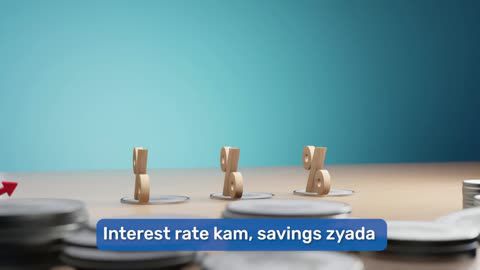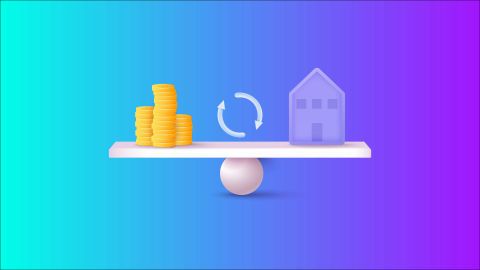In India, the Ready Reckoner Rate (also called ‘circle rate’ or ‘guidance value’) is the minimum price set by the government for registering property transactions. When a property is bought or sold, the sale price cannot be shown lower than this rate during registration.
Please note that the ready reckoner rate helps in determining the fair value of a property for tax and registration purposes. It makes sure that the buyer and seller do not undervalue the deal to save on stamp duty and registration charges.
Want to learn more? In this article, you will understand what the ready reckoner rate is, why it is important, and how it is calculated. You will also learn how to check the applicable rate in your area and what happens if a property is sold below the ready reckoner rate.
What is the ready reckoner rate?
Ready reckoner rate, also known as circle rate or guidance value, refers to the minimum valuation set by the state government for properties in a particular area. It serves as a benchmark for calculating various taxes, charges, and fees related to property transactions, including stamp duty and registration fees.
What are the factors that affect the ready reckoner rate?
The government-appointed authorities, such as the revenue department or municipal corporation, periodically assess and revise the Ready reckoner rates for different localities based on various factors. These factors may include:
- Location: Properties in prime locations with better infrastructure and amenities generally have higher ready reckoner rates compared to those in less developed areas.
- Market trends: Real estate market dynamics, including demand-supply dynamics, prevailing property prices, and trends in property transactions, influence the Ready reckoner rates.
- Property characteristics: Factors such as plot size, dimensions, accessibility, proximity to amenities, and development potential are taken into account while determining the Ready reckoner rates.
How is the ready reckoner rate calculated?
The calculation of the ready reckoner rate for a property is based on its location and type. Follow these steps for a residential apartment in a housing society:
- Multiply the built-up area (in sq. metres) by the ready reckoner rate of that area.
- If the apartment includes open car parking, add 40% of the rate per unit area of that parking space.
- If it includes covered or stilt parking, add 25% of the rate per unit area.
This total gives you the minimum property value for registration (based on government norms).
For all other property types:
- Find the built-up area of the property. If the value is 1.2 times the carpet area, use that higher value.
- Identify the property’s location. Be aware that ready reckoner rates vary by area.
- Apply the government rate per square metre for that location.
What is the importance of the ready reckoner rate?
The ready reckoner (RR) rate applies to real estate transactions in India. It is the minimum value set by the government for a property in a particular area. This rate ensures that property transactions are:
- Recorded at a standard value
and - Not undervalued or overvalued
Some other major benefits of this rate are:
- Acts as a guidance value:
- The RR rate provides a fair reference point for property pricing.
- Whether someone is buying or selling, the RR rate prevents manipulation of property values.
- RR rate creates more trust and transparency in real estate transactions.
- Used to calculate taxes and charges:
- The RR rate is used to calculate stamp duty and registration charges.
- Usually, these charges are based on the higher of the following:
- Actual sale price
or - The RR rate
- Actual sale price
- This means even if a buyer and seller agree on a lower price, the government will still collect fees based on the RR rate.
- In this way, RR rate helps the government prevent revenue loss from undervalued deals.
Monitors real estate trends
Changes in RR rates show how property values are moving in a particular area.
For example,
Say the government raises the RR rate in a region.
Now, this is a sign that property values are increasing.
By analysing this data, buyers, sellers, and investors can predict market trends.
Helps to generate revenue:
The RR rate helps the government in generating tax revenue from property deals.
These funds are used for public services (such as roads, healthcare, and welfare schemes).
Implications of ready reckoner rate
Understanding the implications of the ready reckoner rate is crucial for property owners and buyers in India. Some key implications include:
- Stamp duty calculation: The stamp duty payable on property transactions is calculated based on the Ready reckoner rate or the actual transaction value, whichever is higher. Therefore, a higher Ready reckoner rate may result in higher stamp duty expenses for buyers.
- Registration charges: Registration fees for property transactions are also computed based on the Ready reckoner rate or the transaction value, impacting the overall cost of property registration.
- Tax assessment: The ready reckoner rate serves as a reference for property tax assessment by municipal authorities. Higher Ready reckoner rates may lead to increased property tax liabilities for owners.
How to check the ready reckoner rate?
In most states, the Ready reckoner rates are published and made available to the public by the respective state government's revenue department or municipal corporation. Property owners and buyers can access the Ready reckoner rates through:
- State government websites: Many state governments provide online portals or websites where users can search and download Ready reckoner rate schedules for different areas.
- Local revenue offices: Physical copies of Ready reckoner rate schedules are often available for inspection at local revenue or municipal offices. Interested individuals can visit these offices to access the rates.
What is the impact of selling properties at lower than ready reckoner rates?
Selling properties below the Ready reckoner rates can have several implications and potential consequences for both the seller and the buyer:
For the seller:
- Tax implications: Selling a property below the Ready reckoner rate may attract scrutiny from tax authorities. They may view the transaction as an attempt to evade taxes by undervaluing the property. In such cases, the seller may be liable to pay taxes on the differential amount between the actual sale price and the Ready reckoner rate.
- Penalties and fines: Tax authorities may impose penalties and fines on sellers found to be underreporting the sale price of their property. These penalties can be substantial and may significantly impact the seller's finances.
- Legal consequences: Selling properties below the Ready reckoner rates can have legal repercussions. Authorities may initiate legal proceedings against the seller for tax evasion or violation of property laws.
- Difficulty in future transactions: Undervaluing a property in one transaction can create difficulties for the seller in future transactions. Prospective buyers and lenders may be wary of purchasing or financing a property with a history of undervaluation.
For the buyer:
- Limited financing options: Lenders typically assess the value of the property based on the Ready reckoner rate or the sale price, whichever is higher. Purchasing a property below the Ready reckoner rate may limit the buyer's ability to secure financing, as lenders may be reluctant to lend based on a lower valuation.
- Potential tax implications: Buyers may face tax implications if they purchase a property below the Ready reckoner rate. Tax authorities may consider the differential amount between the actual purchase price and the Ready reckoner rate as undisclosed income, subjecting the buyer to taxes and penalties.
- Resale value concerns: Buying a property below the Ready reckoner rate may affect its resale value in the future. Prospective buyers may perceive the property as undervalued, impacting its marketability and potential resale price.
- Legal risks: Purchasing a property below the Ready reckoner rate may expose the buyer to legal risks, including potential disputes with tax authorities or legal challenges from other stakeholders.
Online portals to search ready reckoner rates
Each state and union territory (UT) in India has its own official website or portal. From here, you can check the ready reckoner rates. Below is a complete table of states and UTs along with the official portals:
State/ Union Territory |
Official portal name |
Andhra Pradesh |
Units Rate Portal of AP |
Bihar |
Minimum Value Register Details Portal for Bihar |
Chhattisgarh |
Circle Portal for Chhattisgarh |
Chandigarh (UT) |
Chandigarh’s Collector’s Rate Portal |
Delhi (UT) |
e-Circle Rate Portal for Delhi |
Dadra & Nagar Haveli and Daman & Diu (UT) |
Revenue Services Portal of Daman and Diu |
Gujarat |
Garvi 2.0 Portal Gujarat |
Goa |
Land Rate Portal of Goa |
Himachal Pradesh |
Circle Rates Document Portal for Himachal Pradesh |
Haryana |
Collector Rate Portal for Haryana |
Jharkhand |
Know Your Circle Rate Portal for Jharkhand |
Kerala |
Fair Value Portal for Kerala |
Karnataka |
Valuation Details Portal (Kaveri Online Services) for Karnataka |
Lakshadweep (UT) |
Lakshadweep’s Land Records Portal |
Manipur |
Guidance Value Portal for Manipur |
Madhya Pradesh |
Guideline View / Market Value Assessment Portal |
Maharashtra |
Property Valuation Portal for Maharashtra |
Odisha |
Benchmark Valuation Portal for Odisha |
Puducherry (UT) |
(Not listed or portal not mentioned) |
Punjab |
Collector Rate Portal for Punjab |
Rajasthan |
DLC Rates Portal for Rajasthan |
Telangana |
Unit Rates Portal for Telangana |
Tamil Nadu |
Guideline Search / Property Valuation Portal |
Tripura |
Land Valuation Certificate Portal for Tripura |
Uttar Pradesh |
Circle Rates Portal for Uttar Pradesh |
Uttarakhand |
Circle Rates Portal for Uttarakhand |
West Bengal |
Revenue Department Portal for West Bengal |
You can visit the relevant portal for your state or UT to check the applicable ready reckoner rate.
Conclusion
The ready reckoner rate applies to property transactions in India. This rate represents the minimum value at which a property can be registered. Through it, you can get a fair estimate of the property’s worth in a particular area.
This rate is often used as a starting point for price negotiations between the buyer and the seller. Many costs related to buying property (such as stamp duty, registration charges), and even loan eligibility, are based on this rate.
So, before buying a property, as a buyer, you should check the ready reckoner rate and calculate the total cost (including taxes). This allows you to better plan your budget and avoid unexpected expenses.
Apply for a home loan in different cities
Home loan options for different budgets




